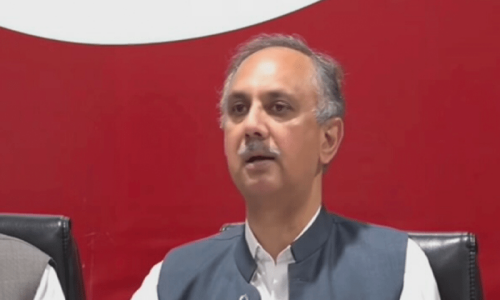A RATHER embarrassing state of affairs is developing in the economy as interest rates hit lows they haven’t seen for a decade, but borrowers remain shy and credit offtake refuses to take off. For almost a year now, as interest rates plummeted from 9.5pc at the start of the year to 6pc today, the appetite for borrowing by the private sector has stubbornly failed to materialize.
Earlier in the year, the State Bank expressed some hope that with sharp reductions in the cost of borrowing, “the momentum of credit off-take is likely to pick up with the realization of the lagged impact of November 2014 policy rate cut.” That was in January.
Take a look-Editorial: Monetary policy fears
Yet till today that hope has not materialized. The last IMF review of the economy noted “private sector credit growth further decelerated to 5.6pc year on year in June.”
According to data on the State Bank’s website, total outstanding loans from banks increased most rapidly for government, with private sector lending remaining more or less static through the eight months since January.
Government borrowing from scheduled banks increased by a little over Rs1 trillion, or 23pc, in this time period while total outstanding credit to the private sector grew only by a fraction, going from Rs3.5tr in January to Rs3.548tr in September.
Some in the business community, who argued all along for bringing interest rates down to single digits, now say that the main reason for this sluggish response to declining interest rates is that the cost of doing business has increased to the point where nobody is willing to take out new loans, preferring instead to operate their enterprise from their own cash flows.
“I’ll borrow when my business grows” says Jawed Bilwani, Chairman of the SITE Association of industry and a major voice amongst the value added sector in the textile industry. “At the moment, my business is drying up, so where is the capacity to take out additional loans?”
He should know. The textile industry has seen its total outstanding loans drop by more than 10pc since January. He attributes this largely to the fall in exports.
Whatever increase there is in the use of bank credit appears to be led by transport.
“My feeling is that auto sector is focusing on building inventories in anticipation of a spike in demand from CPEC projects” says a high level source in the banking system with direct knowledge of who is borrowing how much.
His feeling is supported by some numbers. In contrast to most other sectors of the economy, transport actually increased its share of total outstanding credit by almost 17pc since January, suggesting a fair amount of investment going into this sector.
A boom in automobiles is visible, with car sales hitting record highs and advertising campaigns in full swing in most major cities, and total outstanding auto loans rising by almost 24pc between January and September of this year. Yet conversations with sales executives of auto companies suggest that majority of people are still buying their cars on cash payment, and in most cases of auto financing, the amount being financed is very small.
The fastest growth in manufacture of automobiles has been in the light pick-up truck segment, followed by vehicles in the 1000cc and smaller category. Light pick-ups have increased production by almost 140pc.
All other sectors show negative growth of credit utilization in the year 2015 thus far, which stands as a contrast to transport.
“We’re all waiting on the CPEC projects” says the source in the banking system. “If and when those projects get going, that is when you will see these numbers begin to turn. But that is going to take time.”
Some of those projects have lined up their domestic sources of financing, but are still waiting for the crucial foreign financing to be put in place. An example is provided by the Sindh Engro Coal Mining Company Ltd (SECMC), which is seeking to set up an integrated coal mining and power generation project in the Thar desert.
The local component of their financing, at $700mn, has already been secured but the foreign financing component, at $800mn has been hit by some delays. “Those issues have now been sorted out and a signing ceremony for the foreign financing has been scheduled for 21st December” says Shamsuddin Shaikh, CEO of SECMC. He expects financial close by January of 2016, “perhaps even sooner”.
Other CPEC projects have similar stories to tell, but once they get going credit off take by the private sector can begin in earnest. By then there is a chance that the cycle of declining interest rates would have ended though, as hinted by the State Bank in its latest monetary policy statement.
Despite some nominal increases in a few sectors, the economy continues to languish behind sluggish growth. If history is any guide, only an external jolt will kick it into motion, and for that, all eyes are on the CPEC projects.
Published in Dawn, November 25th, 2015














































